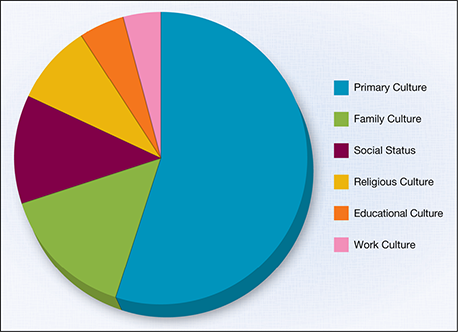15.3 Telephone Courtesies
Customers and healthcare professionals often contact pharmacies by telephone. They may be calling in refills, inquiring as to whether a new prescription has been received or filled, asking about the cost of medications, and verifying insurance coverage for certain prescriptions in the community setting. In the institutional setting, nurses may be calling to locate a missing medication, pharmacists may be calling to request delivery of an item, or an outside hospital may be calling to ask to borrow medication. These are all requests the technician can easily address. The following are some guidelines for using the telephone properly:
 Work Wise
Work Wise
Try to smile while talking on the phone to customers and make them feel that their call was welcomed.
When you answer the phone, identify yourself and the pharmacy, as in “Good morning, Reinhardt’s Pharmacy. My name is Jess. How may I help you?” or “Good evening. Inpatient pharmacy. Pharmacy technician Katherine speaking. How may I help you?”
Always begin and close the conversation with a conventional courtesy like “Good morning” and “Thank you for calling.” Stay alert to what the caller is saying and use a natural, conversational voice. You should be friendly but not too familiar with the caller. When speaking to patients who are hard of hearing, speak clearly, pronounce each word distinctly, and be prepared to repeat yourself without frustration.
If a prescriber is calling in or ordering a new prescription, you may need to turn over the phone to a pharmacist. In most states, technicians by law are not allowed to take prescriptions over the telephone. Be sure that you are aware of the regulations in your state.
If the caller has questions about the administration or effects of a medication or about a medical condition, adverse reaction, or drug interaction, place the customer on hold and refer the call to the pharmacist on duty.
Make sure that any information you provide is accurate. Giving incorrect directions to a customer in need of a prescription can be a life-threatening mistake.
In the community setting, if the caller is requesting a refill, then politely ask for their name and date of birth and/or prescription number. After verifying that the prescription can be refilled and dispensed, give the caller an approximate time when it will be ready for pickup, and thank them for calling ahead.
Depending on the regulations in your state and the procedures of your community pharmacy, you may be authorized to handle prescription transfers or to provide information related to prescription refills. Follow the procedures outlined by your supervising pharmacist.
If a customer is calling about a medical emergency or a prescription error, refer the call to your supervising pharmacist.

Pharmacy technicians need to be able to communicate professionally with patients and healthcare professionals, even when on the telephone. Studies say that listeners can tell if people speaking on the phone are smiling when they speak or not.
Respecting Professional Boundaries
Queries involving pharmacy location, printed product directions, availability, or price can be handled by the technician. As you know, questions that involve professional medical or medication information, judgment, or counseling must be referred to the pharmacist. So use common sense to determine whether a given query from a customer exceeds the bounds of common knowledge. The customer may want to know whether to take aspirin or another OTC analgesic such as ibuprofen, or they may ask whether it is acceptable to take ibuprofen with a prescribed blood pressure medication. You may say to the customer, “That is a good question; let me have you speak with the pharmacist.”
 Practice Tip
Practice Tip
Refer to a pharmacist any questions involving:
(1) patient assessment;
(2) proper administration, dosage, uses, or effects not noted on directions or packaging; and
(3) the need for a pharmaceutical opinion or judgment.
Exhibiting Patience
The pharmacy technician must have patience when working with customers. In the community setting, insurance issues in particular can be complicated and frustrating for patients and technicians—and resolving these issues can be time-consuming, especially for an inexperienced pharmacy technician. It takes time and experience to learn the ins and outs of the numerous prescription drug insurance plans, so if you cannot adequately address the patient’s questions or concerns, don’t be embarrassed or anxious. Check with a senior technician or the pharmacist to better understand the issue and how it can be resolved within a reasonable time period. Inform the patient of the outcome, and learn from the encounter to better serve a future customer.
 Work Wise
Work Wise
Five tips for best customer interactions:
(1) face the patient and speak slowly;
(2) avoid slang or medical terms, putting information in clear, everyday language;
(3) be a good listener;
(4) keep the conversation succinct and focused;
(5) rephrase and summarize to make sure you understand information correctly.
Working in a customer service-oriented position can be difficult and tiring. Therefore, it is common in larger pharmacies to rotate responsibilities so that every two to four hours the technician may have different duties. In the community pharmacy setting, collecting payments and dealing with the public, entering new prescriptions and refill requests, resolving insurance claims, filling prescriptions, ordering medications, and checking inventory may all occur in one shift. Preparing sterile compounded products, refilling automated dispensing machines, and delivering medications and supplies are duties that you may be asked to perform.

Pharmacy technicians must learn patience and friendliness in their interactions with their colleagues and customers.
Being Sensitive to Diverse Patient Populations
As a technician, you will run into a great range of cultural backgrounds of customers, patients, and coworkers in a community or institutional pharmacy. Be sensitive to and respectful of differences in culture, religion, language, abilities, and other backgrounds. Do not assume that everyone thinks as you do, or should think and act as you do. Try to become aware of differences while understanding that everyone has similar human hopes and needs, though expressed differently.
Awareness of Cultural, Religious, Gender, and Ethnic Differences
We live in an increasingly culturally and ethnically diverse society. According to 2014 US Census Bureau estimates, the majority (60.7%) of the US population was non-Hispanic white Americans, which is a diverse group encompassing individuals of many cultural Slavic and European backgrounds. Latin Americans (or Latinx) made up 18.1% of the population, followed by African Americans at a little over 13%, Asian Americans at nearly 6%, and 2.7% multiracial Americans. Within the Asian community there are diverse cultural differences among the Chinese, Japanese, Vietnamese, Korean, Filipino, East Indian, and other populations. The non-Hispanic white populations are trending down while the other population sectors are trending upward.
 Work Wise
Work Wise
US population projections show that America will grow even more diverse every year because of differing birth rates between majority and minority groups, and immigration. This diversity has increased the nation’s variety of foods and restaurants, arts, and culture, and Americans’ love for travel.
Cultural Identity The term “culture” is commonly defined as the customs, beliefs, art, food, traditions, religious practices, marriage and family structures, and attitudes that are learned and shared to varying degrees by members of a group. Our cultural values influence our behavior and response to medications. According to studies, cultural differences affect patient attitudes about medical care and treatment. For example, in some Asian countries, mental illness is considered a dishonor to the family. Consequently, the number of patients seeking psychiatric care in these countries is small. This stigma continues in several immigrant communities and in the general populace of the United States, though not as intensely. This may affect how these patients feel as they come to pick up mental health medications.
 Work Wise
Work Wise
To successfully understand someone else’s iceberg of cultural beliefs, it is very helpful to explore one’s own.
Urban community pharmacies and hospitals are usually located in areas catering to diverse customers. Differences in age, gender, sexual orientation, ethnicity, language, culture, economic status, educational background, and disability will be part of your everyday practice in the pharmacy. To serve varied customers, cultural sensitivity is a valuable skill. Cultural sensitivity is defined as awareness, knowledge of, and respect for cultural beliefs that differ from your own. Knowing more about a customer’s culture helps you provide higher-quality service and shows a customer that you care about them. Working to overcome any cultural barriers will help you make every patient and coworker feel at ease to trust you and vice versa.
Iceberg Metaphor of Cultural Identity The social scientist Edward T. Hall compared culture to an iceberg. On the surface, we may perceive differences in physical features, manner of dress, native language, accent in speaking English, traditional foods, and neighborhood composition and location. These are the visible top layers of a person’s cultural iceberg. Underneath the visible level are the beliefs, attitudes, values, and perceptions that consciously and often subconsciously guide a person’s decisions and actions (see Figure 15.1). Being knowledgeable about the unseen aspects of cultural identity can help create empathy toward cultural barriers.
Figure 15.1 The Iceberg Metaphor of Cultural Identity

Multiple Levels of Influence on Identity Each individual is influenced by many levels of culture and identity. We each have a family of origin with its own history, traditions, and beliefs that exists within a larger community culture, neighborhood, or identity group (such as high school teenagers), which is often part of a larger group in the United States of mixed ethnic and cultural backgrounds. This local community culture exists within the larger culture of American media, infrastructure, and politics.
Then there are the layers of socioeconomic status, religious identity, educational influences, and work. Each person is a complex mix, as is each community. People and communities exhibit a spectrum of behaviors and beliefs. In America, political affiliations or leanings can also have a huge defining effect and are connected often to media preferences, religious identity, and socioeconomic status, so politics is another aspect of culture that can grow out of other elements. Gender also has a huge influence because of differences in perceptions of, expectations for, and treatment of the genders in various cultural contexts (see Figure 15.2).
Figure 15.2 The Multicomponent Cultural Identities of Individuals

Source: What Language Does Your Patient Hurt In? 3e
Accommodating Cultural Trends
It is helpful to be aware of cultural trends when striving for understanding and overcoming cultural barriers and communicating with respect. You may perceive them in yourself, colleagues, and customers. If you understand the potential origin of some trends, you can both understand and communicate more effectively in addressing concerns. However, it is very important to avoid in your mind letting observation of simple trends solidify into flat stereotypes. A stereotype is an oversimplified characteristic of a group of people. It is a generic image of a group of people based on patterns, word-of-mouth stories, prejudiced attitudes, opinions, or uncritical judgments about isolated incidents blown into sweeping generalizations.
 Put Down Roots
Put Down Roots
Cultural competence in the pharmacy refers to having the capacity to serve effectively and respectfully the diverse individuals and communities of pharmacy patients and customers in the context of their varied cultural beliefs, needs, and behaviors.
It is essential that trends you encounter or are presented with do not fall into stereotypes or fixed images of anyone from a certain background. The interesting part about humans is that they rarely fit well into a static definition, even when they try to. Because there are so many levels to every person that make up their history, genetic and cultural makeup, experiences, and many aspects of cultural identity, each person is as individualized as their fingerprint.
Work to discover the individualized and deeper aspects of each person: their beliefs, attitudes, values, perceptions, and everyday interests. Completing an inventory of your own influences can help you understand yourself and why you may react in one way or another to things you encounter.
For greater understanding, read Paradigm’s What Language Does Your Patient Hurt In? (Third Edition). It has essential counsel for how to develop cultural and linguistic competence and handle cross-cultural communication. It has chapters with special counsel and awareness for health care for patients of African American, Native American, Hispanic and Latinx, Asian, Middle Eastern, Eastern European, and specific religious backgrounds.
Mistrust of Western Medical Practice Considering the complex history of race relations in the United States, it is not surprising that many minority cultures do not always accept or trust current medical practice or recommendations. For example, some African American patients may mistrust conventional medicine due to systemic mistreatment of their communities, such as the infamous Tuskegee study, an unethical experiment conducted between 1932 and 1972 in which the effects of untreated syphilis were studied in black men without their knowledge.
Similarly, Native Americans have endured unspeakable hardships at the hands of Western medicine and are often understandably reluctant to seek care. Pharmacy personnel need to be sensitive to these long-standing cultural memories and belief systems.
Reliance on Self-Care Many cultures or communities, especially those that have a history of oppression or poverty, have developed a strong reliance on self-care out of necessity. For example, less affluent people in some neighborhoods may rely more on self-care, OTC medications, and dietary supplements and less on physician visits. They also may be less likely to believe in the benefits of long-term treatments, as they may have fewer models of successful health treatments in their neighborhoods and less ability to pay for them than more financially stable patients. Therefore, they may discontinue their drug therapy before it has run its course. In Japanese and Vietnamese cultures, patients often self-regulate their medications with lower-than-recommended doses due to concerns about side effects.
Reliance on Herbalists and Healers Traditional healers have a nearly universal presence in indigenous and folk cultures. If you practice in the rural United States, then you may hear more about home remedies. In Native American communities, patients tend to place more belief in family and spiritual values and treatments than in contemporary Western medicine. Within the diverse US tribal populations, illness is often considered to be due to an unhealthy imbalance in one’s life within the body but also within interpersonal and spiritual relationships. All things are seen as connected, so healing does not just involve the body but is placed within a more holistic context. Traditional healers may believe that prescription drugs cannot work alone; they encourage spiritual and social therapies too.

Non-Western medical practices may involve shamans, herbalists, and healers to provide primary care to patients.
In Mexican American communities, primary care is often provided by curanderas, or spiritual healers. They employ a rich mix of herbal remedies and rituals to encourage healing and drive off bad spiritual practices and forces, and encourage good ones. Root doctors from the American South use prayer rituals and herbs to restore the body to health. Many patients from Asia have stronger cultural beliefs in the healing power of herbs and practices like acupuncture and yoga rather than in prescribed medications and Western surgical practice. In the varied Chinese cultures, the yin (cold) and yang (hot) energies must be placed in harmonious balance for the patient to be at optimal health. Western medicine is beginning to learn from all these cultures as they are learning from Western medicine, which is why there is a marked increase in the integration of alternative holistic practices, herbal medicines, dietary supplements, psychology, and even spirituality into Western medical understanding.
Influence of Religion on Medical Care Religious holidays and customs can also have a great impact on healthcare practices. For Muslims, the monthlong fast of Ramadan may interfere with the ability to take prescribed medications on their usual time schedules. During this holy month, Muslims do not drink or eat until after sundown. They also may prefer a healthcare practitioner of their same gender, as do many people in Orthodox Jewish communities. Religious faith and prayer also have a major impact on health attitudes within many Christian communities, with prayer groups offering healing support. Fasting is a recommended practice for certain seasons among Catholics, Muslims, and others. Christian Scientists and Jehovah’s Witnesses generally do not believe in any source of healing other than prayer and the revising of wrong thinking that leads to wrong actions, which they believe leads to illness.
Influence of Gender and Sexuality Often people prefer to discuss personal medical issues with pharmacists or technicians of the same gender. For example, some male customers may feel more comfortable discussing questions on condom use or erectile dysfunction drugs with a male technician or pharmacist. Similar issues may arise in the case of a female customer with issues regarding menstruation or menopause. Be sensitive to this; if you sense that a patient would like to talk about a sex- or gender-related issue, or is from a traditionally orthodox religion, then it would be wise to call over someone of that person’s same gender to offer that person service.
The pharmacy technician should also be understanding of the unique health concerns and needs of the gay, lesbian, bisexual, and transgender populations in the communities they serve. By establishing a comfortable, nonjudgmental environment for the discussion of gender and sexuality issues as they relate to healthcare needs, pharmacy personnel can establish rapport and provide effective treatments for all patients.

Patients and colleagues come from a wide variety of backgrounds, and all deserve respect.
Diseases that Disproportionately Affect Certain Ethnic and Socioeconomic Communities Certain diseases are on the rise among specific ethnic groups for a mixture of many different reasons. These health concerns can, in part, be attributed to the unhealthful eating habits of many individuals living in poverty in the United States, due to the lack of funds and the expense of fresh fruits, vegetables, and meats; the lack of grocery stores and farmers’ markets in poor neighborhoods; and the lack of car transportation and gas money to travel to areas that possess them. Poor diet and stress can result in medical issues.
For example, the incidence of diabetes is much higher among Mexican Americans and Native Americans. The African American population has a higher incidence of hypertension, stroke, and kidney disease. Obesity is an issue with many American cultural groups.
All US populations tend to have more reliance than other countries on processed food products and fast foods, both of which tend to be higher in salt, sugar, calories, and numerous additives, and lower in nutritional value. As many Asian immigrants have adopted a more typical US diet, there is now a higher prevalence of diabetes among these American communities. Youth and teens of all American backgrounds have growing rates of obesity and diabetes. These trends are occurring in other countries as well, as they adopt American fast food restaurants and processed foods.
Education level also greatly affects health, with more educated individuals having more access to health information and therefore often putting more of a priority on healthy eating and fitness. More educated individuals often have higher earning levels and more access to healthy foods.
Overcoming Language Barriers
Language differences, medical terminology, slang, and accents can create communication barriers with patients. If patients are not native English speakers, they may come in nervous and self-conscious about their language skills and ability to tell you what you need to know. They also may not understand the questions you are asking and simply nod or say yes to avoid embarrassment.
 Practice Tip
Practice Tip
Many pharmacy software programs can print patient materials in different languages.
If you cannot understand a customer because of a language difference, then do not speak louder or in an exaggerated slow manner that can seem condescending. Simply enunciate in a clear, slow, but natural way, and avoid using slang terms, medical terms, or abbreviations because the person may not be familiar with them. Use respectful descriptive gestures if they can help. Apologize courteously for your language deficiency if necessary, and utilize translator services. Translators can usually be available within minutes using telephone or teleconferencing capabilties.
If you have a translator available, summarize the key information that you need to obtain from the patient. Keep sentences short, and repeat the questions using gestures and facial expressions if the patient does not understand. Be patient; give the translator time to formulate thoughts in the customer’s language; and do not interrupt the exchange.
If a translator is not available, then the pharmacist may have counseling sheets that use drawings, diagrams, and clocks made especially for this purpose. Also, be aware that some computer software programs print medication labels and patient information leaflets in different languages. Many foreign language apps are available for smart phones that may facilitate communication.
Accommodating for Physical and Mental Disabilities
Patients with particular visual, hearing, cognitive, and mental challenges or conditions often require special accommodations by pharmacy personnel.
Visual and Hearing Impairment For patients with visual impairment, a pair of custom reading glasses or large-print or Braille materials can be helpful. Patients may need to number or color code their morning versus evening medications. A family member or pharmacy technician may assist by filling up a drug calendar or a plastic drug organizer with the weeks’ or months’ worth of medication. Patients who are hard of hearing may benefit from a slow, deliberate, short discourse (for lipreading) or—if they are deaf—from sign language, or written instructions.

Pharmacy staff must strive to meet customers where they are and accommodate any physical or mental challenges.
Mental and Physical Challenges Some patients may have varying degrees of intellectual or physical barriers to understanding you. If you are interacting with a patient who struggles with understanding or the ability to move easily to where you are, you may need to be particularly understanding and accommodating as you work to obtain necessary demographic, insurance, and health information. Providing directions about medication use or payment should be directed at the appropriate level of understanding. For patients with physical disabilities, pharmacy personnel should make every effort to accommodate their needs. These accommodations may include recommending drive-through service, using non-childproof container lids, providing assistance in obtaining items from shelves, or ensuring their comfort during the medication filling process.
Accommodating for Economic Hardship Hard economic times and rising healthcare costs have made it increasingly difficult for patients to afford medications and other forms of treatment. Pharmacy staff members should be attuned to these patients’ needs and offer compassion and creativity in trying the many different strategies for assistance as described in Chapter 8.